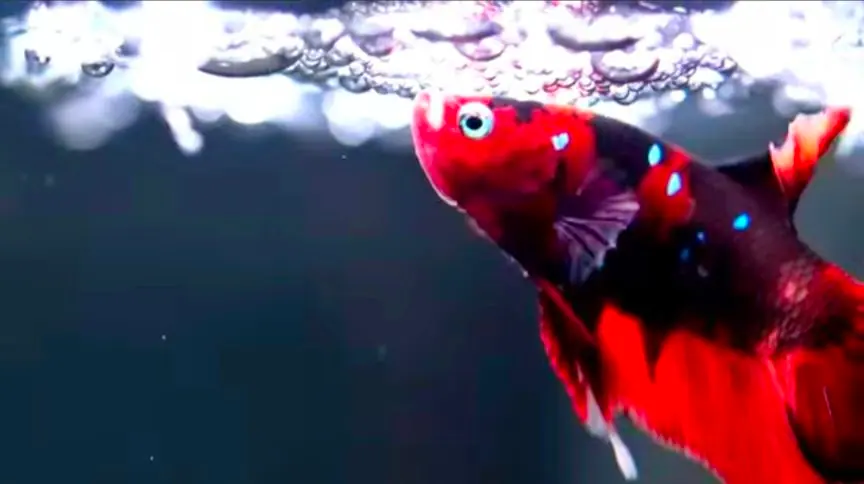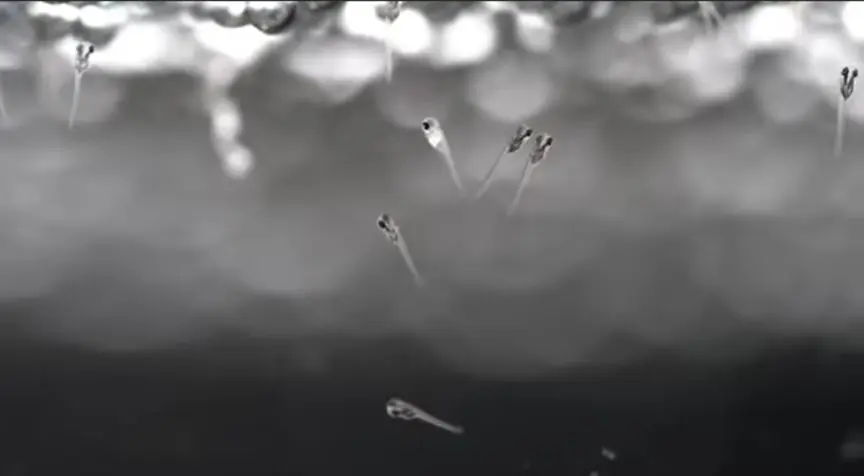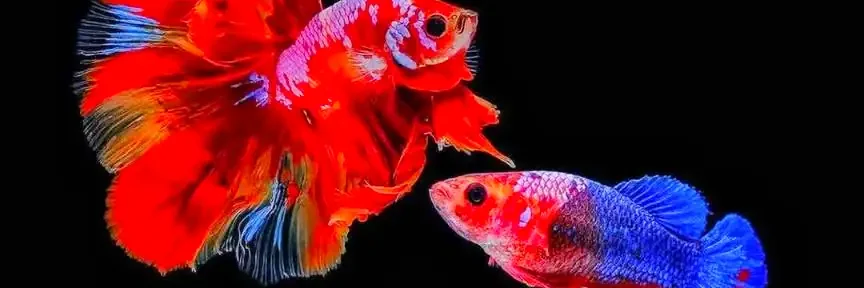Introduction
Breeding betta fish means preparing a male and betta fish to reproduce and produce offspring (fry). It is a complex and time-consuming process that betta experts only recommend when you have solid reasons for doing so, as it’s unlikely to be profitable.
Breeding bettas is a delicate and intricate process that is one of the most heart-tiring processes. It requires careful planning, thorough preparation, proper equipment and a deep understanding of the fish needs to create a suitable environment for successful spawning.
We have gained significant expertise after being involved in this process for several years. We have always approached breeding with thorough preparation, knowledge and the necessary resources. It has made us feel the need for a detailed step-by-step guide on the topic to help betta lovers breed healthy bettas. However, we recommend this process to only those who are fully committed and prepared for the responsibilities and challenges involved.
One more thing to note, while this method has worked for us, it may need adjustments in your case depending on individual circumstances.
Why Breed Betta Fish?
Breeding betta fish can be rewarding if you are ready to take on this big responsibility with full commitment.
It helps you learn a lot of new things, be creative and get familiar with new experiences regarding betta care. You’ll learn much about how fish live, breed and grow. It opens up a new world of betta biology and behavior.
Breeding lets you explore all sorts of fun genetics, different colors, patterns and fin types. In short, it helps you become familiar with almost all kinds of betta fish. It’s a hands-on way to create your dream betta and express your creativity in a living, breathing form.
Essential Supplies for Breeding Betta Fish
As said earlier, the breeding process involves plenty of equipment and accessories, which need to be ensured before starting.
Tanks and Jars
- A 10-gallon tank for breeding.
- A 20-gallon long tank for raising fry.
- Separate tanks or jars for housing the male and female bettas after breeding.
- Small jars (e.g., half-gallon jars) for separating aggressive fry later.
Heaters and Thermometers
- An adjustable heater of 25 watts set to 80°F (27°C) with LED displays.
- Glass thermometers for accurate temperature monitoring.
Filters
- Sponge filters for all tanks especially the fry tank to prevent fry from being damaged and sucked into the filter.
- An air pump along with a filter to maintain water quality.
Plants
- Live plants to maintain water quality and provide comfort for the bettas.
- Include small plants for the female to hide in. Remove plants after breeding.
Decorations
- Keep enough tank decorations like bubble wrap and Indian Almond Leaves (Catappa leaves) to help stabilize bubble nests and provide tannins with antifungal properties.
- Christmas moss (or a Styrofoam cup as an alternative) to provide hiding spots and aid in bubble nest building.
- Plastic wrap to cover the tank and maintain humidity.
- A light to simulate natural conditions.
- Use an aerator set to a low bubble rate and place it far from the bubble nest.
Feeding Supplies
- Pipettes for feeding fry and performing water changes in jars.
- High-quality food for conditioning the breeding pair (e.g., bloodworms, daphnia).
Complete Process of Breeding a Betta Fish
Breeding a betta fish involves several steps, from tank preparation to caring for new adult betta fish. We’ve put together a clear, easy-to-follow 7-step process that worked really well for us based on hands-on experience.
1. Setting Up the Breeding Tank
Tank Preparation
For our tank setup, we went with a 10-gallon clear plastic Sterilite tub. You can also use an empty 10-gallon tank with a lid and light. Fill the 10-gallon breeding tank halfway or two-thirds with treated water or up to a depth of 4–6 inches. Ensure the tank bottom is bare to prevent eggs from being lost. Avoid using gravel, as it can trap waste and harm fragile fry. Cycle the tank properly before introducing the bettas.
Temperature and Environment
Let the heater run overnight to stabilize the tank temperature before introducing the bettas. Set the heater to 78–80°F (25–27°C) to mimic the natural breeding season.
Add a sponge filter, some floating plants and one or two hiding spots for the female to retreat to. Place bubble wrap and a Catappa leaf on the water surface to help the male build a bubble nest.
2. Choosing the Right Breeding Pairs
Before you even think about breeding, choosing the right male and female bettas is essential. Healthy, well-prepared fish are way more likely to breed successfully and more importantly, they’ll produce strong, healthy fry.
When picking your breeding pair, always go for fish that look active and alert. You should look out for the following traits in your selected betta fish.
- Bright, vibrant colors
- Smooth, intact fins with no tearing or rot
- Clear, shiny eyes
- No white spots, bloating or unusual behavior
Sick or weak fish should never be bred. It risks passing on diseases or genetic problems.
The best age for breeding is usually between 6 to 12 months old. At this stage, bettas are sexually mature. They are not too young, not too old at this age.
Find out more about betta’s lifespan in our comprehensive guide.
3. Conditioning the Breeding Pair
Duration
Ensure both the male and female are well-conditioned with high-quality food before breeding. Condition the bettas for 2–3 weeks before breeding. It prepares bettas both physically and mentally for the ongoing process of mating and spawning.
Method
Professional breeders condition the betta pairs by imitating the monsoon period by providing live and varied foods. The best way to convince them is to use fake rain and perform frequent small water changes. Ensure the female becomes visibly ripe, meaning it’s ready to breed and both fish appear healthier and more active.
Feeding
Feed the male and female high-quality, protein-rich foods like bloodworms. This is part of their natural diet, which boosts their energy and prepares them for breeding.
4. The Breeding Process
Introducing the Female
After the tank has stabilized, introduce the male. Place the female in a separate container e.g., a glass vase within the breeding tank for a few days to allow the pair to acclimate to each other. You can use a glass hurricane globe (open-top) and set it inside the tank.
After a few days, release the female into the breeding tank by tipping the jar. Monitor the pair closely for the first 20 minutes to ensure the male does not harm the female.
This setup gives the male a chance to get excited and start building his bubble nest without immediate pressure. And the female can decide if she’s interested, all without fighting.
Observe the Behavior
The male will begin building a bubble nest within 2–3 days, claiming the tank as his territory. It should flare and display his fins while the female should show interest by following him. The male could circle the female.
The female should show signs of readiness such as vertical stripes (though some may not display these due to melanin). It may hide initially but the male will eventually guide her to the bubble nest.
Cover the tank with paper or cloth to provide privacy. The cover also maintains humidity, aiding egg hatching and fry development. If the female appears stressed, remove her and try again later.

5. Spawning
Now comes the drama. The male will wrap around the female in an embrace, squeezing her to release eggs. This is the big moment, called the nuptial embrace. It might look a bit rough but it’s part of the process.
After each embrace, the male collects the eggs and places them in the bubble nest. The male will chase and bite the female, which is normal behavior. The female may appear to go still or even faint for a few seconds but it’s totally normal. The female will display vertical bars on her sides when ready to spawn.
This process can last up to 3 hours. Once spawning is complete, you’ll notice the female hiding or staying very still while the male completely focuses on the nest. It’s time to remove the female and place her in a separate recovery tank. At this point, the male can become very aggressive toward her. He wants no distractions while protecting the eggs. Therefore, removing the female without delay is essential.
6. Caring for the Eggs
The real work begins once the eggs are laid and the spawning is over. These first few days are crucial because your success in breeding depends on how you handle this stage.
The male guards the bubble nest and tends to the eggs, moving them to prevent fungus. The male also reinserts any fallen eggs or fry.
Keep the tank light on 24 hours a day during the first week to support egg development.
Hatching
After 24–48 hours, the eggs will hatch into pro-larvae, with tails visible in the nest. Pro-larvae feed on their egg yolk and do not require external feeding. And the fry will become free-swimming within a few days.
Once the fry are free-swimming, remove the male to prevent him from eating them. Provide the male with a recovery period in a separate tank.
Care During the First Few Days
During these first few days keep disturbances to a minimum.
- No sudden lighting changes
- No water changes unless absolutely necessary
- No loud noises or tapping the glass
Even a small disturbance can stress the male or dislodge the bubble nest and that can be disastrous.
7. Raising the Fry
Feeding
| Fry Age | Recommended Food | Feeding Frequency |
|---|---|---|
| Day 1-5 | No feeding required (absorbing yolk sac) | N/A |
| Day 5-10 | Infusoria, Microworms, Vinegar Eels | 3-5 times daily |
| Day 10-21 | Newly Hatched Brine Shrimp (NHBS), Microworms | 3-4 times daily |
| Week 3-4 | Grindal Worms, finely crushed high-protein flakes/pellets (small amounts) | 2-3 times daily |
| Week 5+ | Larger brine shrimp, daphnia, finely crushed flakes/pellets, frozen foods (bloodworms, mysis shrimp, chopped) | 2 times daily |

Water Changes
To maintain water quality, perform daily water changes starting when the fry are 2 weeks old.
Separating Aggressive Fry

- After a few weeks, move the fry to the 20-gallon grow-out tank.
- At 3 months, separate male fry into individual 0.5-gallon tanks to prevent aggression.
- At 4–6 months, the fry will begin to show aggression and can be sexed.
- Separate aggressive individuals into jars to prevent fighting.
- Be prepared for the high cost of supplies, food, and tanks required to raise a large number of fry.
Challenges and Ethical Considerations
Time and Effort
Breeding bettas requires daily care including frequent water changes, feeding and monitoring. Fry are highly sensitive and can die from minor changes in water conditions, temperature or missed feedings.
Overpopulation
A single spawn can produce hundreds of fry, making it difficult to find suitable homes for all of them. Many fry may end up in poor living conditions or be culled.
Cost
The expenses for equipment, food and tanks often outweigh any potential profits from selling fry.
Think about initial setup costs such as breeding tanks, heaters, sponge filters, food, and rehoming costs like transport, packaging or selling fees if shipping.
Having all the information about costs helps you decide whether you’re ready to begin the process. It helps you avoid surprises and ensures you’re prepared to support every step along the way.
Inbreeding and Health Issues
Bettas from pet stores are often inbred and may carry genetic issues, making breeding them ethically questionable. Breeding should ideally be done with high-quality and responsibly sourced bettas to maintain healthy genetics.
If a fry is clearly suffering or cannot survive normally, the most compassionate choice may be humane euthanasia.
Importance of Quality Stock
We avoid breeding bettas of pet stores, as their exact age and genetics are often unknown. Instead, buy bettas from ethical breeders who carefully select their breeding pairs based on health, temperament and desirable traits. It has been noted that high-quality stock increases the chances of producing a desirable fry that buyers will value.
Conclusion
We repeat it once again as it deserves to say that breeding betta fish is a complex but rewarding process that requires patience, attention to detail and proper preparation. Why are you putting yourself through these complexities if you are not fully prepared to handle the breeding responsibilities?
The only recommended thing for betta lovers is to prioritize the well-being of the fish and ensure you have a plan for the fry before starting the process. Following these steps can increase your chances of successfully raising healthy betta fry. Monitor the fish closely and be prepared to adjust your approach as needed. Good luck!
Betta Fish Breeding Chart
| Male Type | Female Type | Expected Offspring | Comments |
| Halfmoon | Halfmoon | Mostly Halfmoons, some Super Deltas | Best for maintaining the HM form |
| Halfmoon | Plakat | Mix of Halfmoons & Short-finned (HMPK) | Good for strong genetics & healthier fins |
| Plakat | Plakat | Pure Plakat offspring | More robust and active fish |
| Crown tail | Crown tail | Mostly Crown tails | Fins may vary in web reduction |
| Crown tail | Halfmoon | Mix of Half Sun & Crowntail | May get messy fin genetics |
| Veil tail | Veil tail | Mostly Veil tails | Veiltail is dominant, difficult to breed out |
| Veil tail | Halfmoon | Veiltail, some Super Deltas | Veiltail gene dominates |
| Veil tail | Crown tail | Mostly Veil tails with slight webbing | CT traits get diluted |
| Halfmoon | Double Tail | Some DT, some HM with wider dorsal fins | Risk of spinal deformities |
| Double Tail | Double Tail | Mostly Double Tails, but higher deformity risk | Avoid excessive inbreeding |
| Koi | Koi | Variable Koi patterns, some marble effect | Unpredictable results |
| Koi | Solid Color (Red, Blue, etc.) | Some Koi, some solid, some marbles | Koi pattern may fade in later generations |
| Marble | Marble | Mostly Marble, some solid-colored | Marbling gene can shift over time |
| Solid Color (Blue, Red, etc.) | Solid Color (Same or Different) | Mix of parents’ colors, some bicolor | Dominant colors (red/blue) will likely show up |
| Copper/Metallic | Any Color | Metallic sheen on offspring | Works well with dragon scale types |
| Dragon Scale | Dragon Scale | Strong dragon scaling | Risk of heavy scales affecting vision |
| Giant Betta | Any Type | Larger offspring, but size varies | Requires multiple generations to stabilize |
Common Betta Breeding Misconceptions
Misconception 1: Betta breeding is easy.
Misconception 2: Any male and female betta can breed.
Misconception 3: Bettas can be left unsupervised during mating.
Misconception 4: Every spawn produces healthy fry.
Misconception 5: Fry can eat crushed flakes or pellets.
Misconception 6: A single tank is enough for betta breeding.
Misconception 7: Selling bettas is easy and profitable.
Frequently Asked Questions
1. How long does it take for betta to breed?
2. How to know if a female betta is ready for breeding?
i. Swollen, rounded belly (full of eggs)
ii. Visibility of ovipositor (egg spot), a small white dot between the ventral fins
iii. Vertical stripes (light-colored bars) on their bodies
iv. Interest in the male’s bubble nest
3. Do betta fish eat their babies?
4. How many times can a betta fish lay eggs?
5. What does a betta bubble nest look like?
i. Tiny, white, or transparent bubbles
ii. Floating on the water surface
iii. Sticky and durable
6. How do betta fish mate without killing each other?
First, remember that wild bettas are not as aggressive as domestic bettas. What we see in aquariums is that male bettas have no room for other bettas, which is all about the domesticated bettas—betta splendens. They have been purposely bred for aesthetic appeal and competitive fighting, while wild betta species are generally calm and less aggressive.
In the wild, bettas have abundant hiding spots, such as rice paddies, dense vegetation, and slow-moving streams. If a conflict arises, bettas can easily swim to those hidden places.
On the other hand, in captivity, where space is limited, bettas have no other option than fighting if a dispute occurs.
Now comes the actual question of how betta fish mate without killing each other. A peaceful mating process occurs when a male betta fish builds a bubble nest near the water surface. When a female approaches, she shows interest in mating by exhibiting vertical stripes. If the male accepts her, he will flare his fins and swim in a circular pattern to impress her. Otherwise, the female will swim away as there is plenty of space in the wild. If the male accepts her, she will stay, and they will complete the rest of the breeding process.




